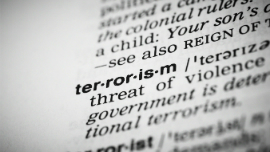The Covid-19 pandemic has demonstrated the vulnerability of modern societies to viral infections and their potential for disruption. The intentional use of a pathogen or other biological agent for the purpose of terrorism may prove highly effective and cause damage – both human and economic – on a far grander scale than “traditional” terrorist attacks, paralyzing societies for prolonged periods, spreading fear and sowing distrust far beyond those communities immediately affected.
The response to bioterrorism must always be a coordinated one. It must mobilise a wide range of human and material resources and therefore require interinstitutional action of the member States of the Council of Europe. The multiplicity and variety of the responders require an interconnection of communication systems, which are essential tools for crisis management. In contrast to the development of exercises in the nuclear field, there is still little feedback in the biological field. The training of civil security and health actors on different types of scenarios is a fundamental element in the effective implementation of a plan to combat biological attacks. The response should also include health and legal monitoring based on a common surveillance system capable of detecting suspicious cases, the reporting of any abnormal, serious or unusual clinical situations and/or the development of epidemiological investigation guides.
All countries are vulnerable to bioterrorism. Its damage is rapid and potentially global. it is necessary to strengthen preventive bioterrorism measures by means of competent interinstitutional intervention and effective international cooperation. The Council of Europe Committee on Counter-Terrorism (CDCT) currently has no concrete evidence of a heightened risk of bioterrorist attack due to the pandemic. However, the experts will continue to work with all our member States to develop common legal standards, facilitate contacts among competent authorities, and organise a coordinated, strengthened response to emerging threats, including those posed by bioterrorism.
* Specific examples of how to anticipate and react to terrorism threats are provided in the Council of Europe Counter-Terrorism Strategy (2018-2022)
* Click here to read more about the CDCT’s response





